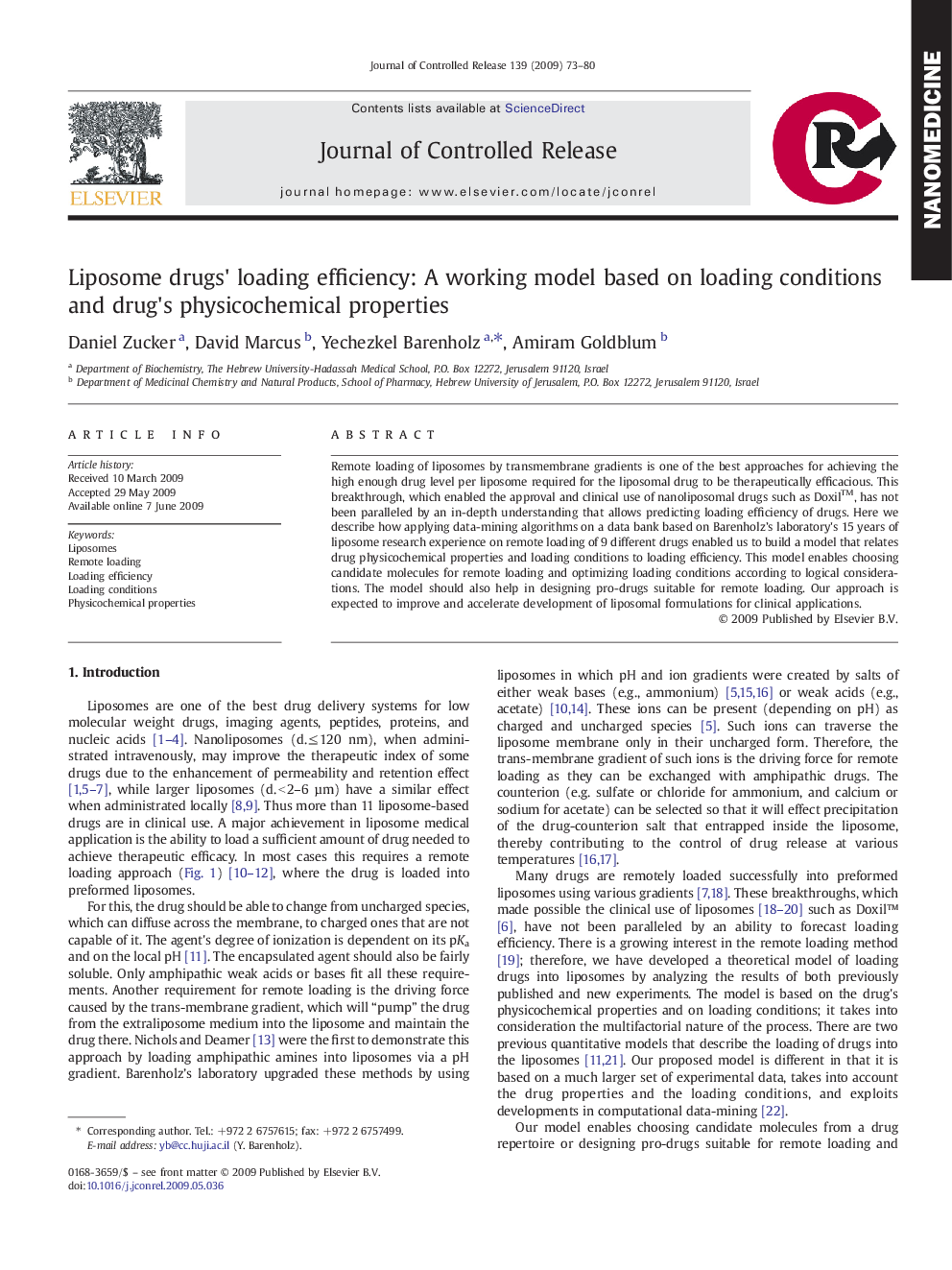| کد مقاله | کد نشریه | سال انتشار | مقاله انگلیسی | نسخه تمام متن |
|---|---|---|---|---|
| 1426166 | 986797 | 2009 | 8 صفحه PDF | دانلود رایگان |

Remote loading of liposomes by transmembrane gradients is one of the best approaches for achieving the high enough drug level per liposome required for the liposomal drug to be therapeutically efficacious. This breakthrough, which enabled the approval and clinical use of nanoliposomal drugs such as DoxilTM, has not been paralleled by an in-depth understanding that allows predicting loading efficiency of drugs. Here we describe how applying data-mining algorithms on a data bank based on Barenholz’s laboratory's 15 years of liposome research experience on remote loading of 9 different drugs enabled us to build a model that relates drug physicochemical properties and loading conditions to loading efficiency. This model enables choosing candidate molecules for remote loading and optimizing loading conditions according to logical considerations. The model should also help in designing pro-drugs suitable for remote loading. Our approach is expected to improve and accelerate development of liposomal formulations for clinical applications.
Remote loading of amphipathic weak base into liposomes using an ammonium sulfate gradient (A) or amphipathic weak acid using a calcium acetate gradient (B).Figure optionsDownload as PowerPoint slide
Journal: Journal of Controlled Release - Volume 139, Issue 1, 1 October 2009, Pages 73–80